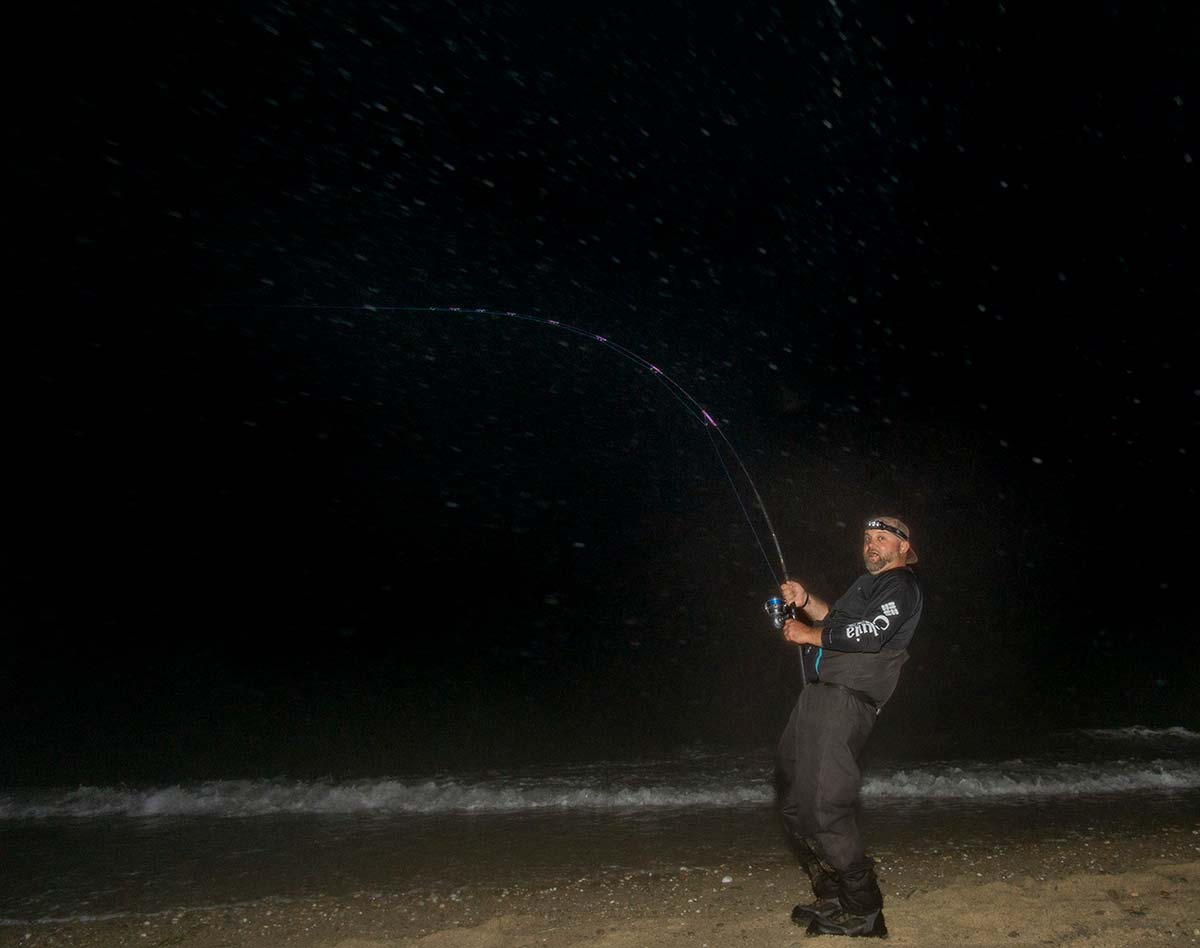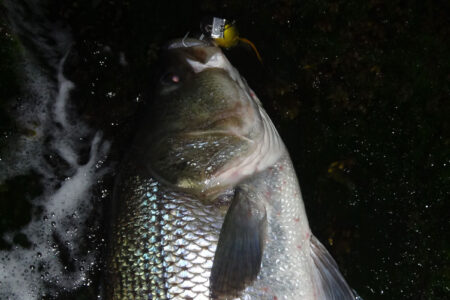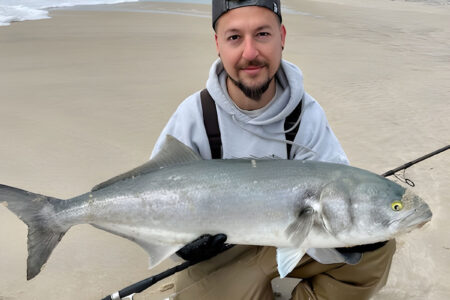
A common practice that actually leads to more lost fish!
I was recently watching a video of a fisherman fighting a giant trevally in the Schelles. At first I was taken with how beautiful the backdrop was, but within 10 seconds, I was so annoyed with the angler I was gritting my teeth. The angler in question was pumping his rod unbelievably aggressively, and then letting it drop almost parallel to the water fast, before finally beginning to reel. In essence, it looked like he was constantly trying to hook the fish in half-speed. And as I suspected, he never landed the fish, the hook pulled relatively quickly.
The thing is, that angler all the way across the world looked a lot like striped bass anglers I see on social media. Lots of anglers haul back on their rods dramatically, and then let it drop back quickly. I think many Northeast anglers – especially surf anglers – make this classic mistake of “pumping” their rod far too much, far too aggressively. I can’t tell if it’s because the anglers think it’s actually the right thing to do, or just that it looks cool. Either way, they’re wrong.
My opinion on pumping the rod is based entirely on the principle of living in a world of practicalities versus a fantasy of technicalities. This simple idea (which applies to so many things in fishing) is summed up like this: while something may be entirely possible (based on physics or science), in practicality it actually rarely – if ever – happens (because we’re human and can’t control everything). Example: while it’s technically possible to land a bluefin tuna on 6-pound monofilament, in practicality it’s just never going to happen; or at least the chance is so small that it’s irrelevant.
So let’s apply this concept to the pumping of a rod. In theory, it is technically possible to pump the rod aggressively, from nearly horizontal to nearly vertical, and apply perfectly consistent tension the entire time using large muscles and body weight to pull on the fish. Technically, an angler could then lower the rod while reeling quickly and consistently, to continue applying perfect tension throughout the entire process. In that technically perfect world, this would allow the angler to fight the fish very quickly with a very low chance of losing it.
However, in practice (the practicality part of this equation), lots of dramatic and hard pumping almost always means inconsistent pressure, especially when you factor in the water conditions and what the fish is doing. That hard pump is often done too quickly and varied over the rods range of motion, which opens up a hole in the fish’s mouth and/or deflects the hook. Then, the angler will drop the rod too fast and/or not reel quickly enough to take up the slack, letting the hook essentially just fall out. While a strong treble or inline may stay stuck through a pump or two, if you do it over and over (as many anglers do), you are just rolling the dice on a pulled hook.
It’s also important to point out that as you raise the rod dramatically, you’re taking away from its power. The fish-beating power of a rod is typically in the bottom third, with it nearly straight up in the air, you can’t access this power. Further, with today’s rods – from spinning, to fly, to jigging – being generally faster in action, raising the tip high is just asking to break it. The rod has no ability to handle the shock of a sudden charge of the fish, and I’ve seen more rods broken 6 to 12 inches from the tip this way than any other. Therefore, it can be a little difficult to get over, but especially with soft rods, it’s good to keep the tip pretty low. If you’re aggressively pumping the rod high, you’re definitely not accomplishing this.
I know some of you are reading this thinking, “how can I even begin to fight a fish if I can’t pump the rod?” I’m not suggesting you should abandon all raising and lowering of the rod tip. Instead, stop thinking about it as a pump, and more a slow rhythm of rising and falling under constant tension. The pace of the raising of the rod should exactly match the lowering of it, and the pressure should be smooth and strong—consistent, not jerky and savage. That is a tough thing to master, especially if you’re perched on a rock in the middle of the night fighting a 30-pound striper, it’s hard to calm down and slow down. However, frankly, I often try to fight my fish with as little rod-tip raising and lowering as possible. I try to lock the rod into a slow, consistent rhythm, keeping the tip around 40 degrees, and moving it in perhaps a 20-degree arc. I then rely as much as possible on the power of the reel to crank it in. With a very strong reel – like something from Van Staal, Penn, Shimano, Daiwa, etc. – you can often do a huge amount of the work by just cranking. It’s a bit more tiring, but I’d rather be tired and happy I landed a giant, than rested and devastated staring at a bent hook.




